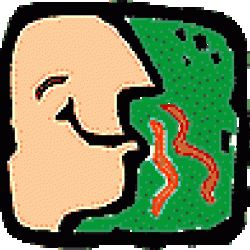Source Institutions
Source Institutions
Add to list Go to activity
Activity link broken? See if it's at the internet archive

In this activity, learners investigate the olfactory system by conducting several experiments. In "CLASS EXPERIMENT," learners find that the ability to detect an odor decreases with continued exposure to that odor, a property called olfactory fatigue. They learn basic facts about sensory receptors, nerve connections, and brain areas, and discover what conditions can affect olfactory fatigue. In "TRY YOUR OWN EXPERIMENT," learners design experiments to further explore the sense of smell. For example, they can investigate whether mixing two substances makes it harder to identify odors; whether gender affects the ability to identify odors, and whether people vary in their ability to match unlabeled containers of odor materials. This lesson plan includes background information, tips for educators and separate guides for educators and learners.
- 10 to 30 minutes
- 2 to 4 hours
- $5 - $10 per group of students
- Ages 11 - 14
- Activity, Experiment/Lab Activity, Lesson/Lesson Plan
- English
Quick Guide
Materials List (per group of students)
- Odorants (see Teacher Guide for list)
- Containers for odorant materials, such as 35 mm film canisters with holes in the lids
- Opaque tape or blindfold (optional, if containers are transparent)
- Timers or stopwatches
- Paper for recording results
- Water for dilutions
- Pen or marker
- Shallow dish of suntan oil containing coconut oil, or a freshly brewed cup of strong coffee, or some other odorant (optional, for pre-lab demonstration)
Subjects
-
Life Sciences
-
Cells
- Cell Structure and Function
-
Human Body
- The Brain and Nervous System
-
Human Senses and Perception
- Smell
-
Cells
-
Mathematics
-
Data Analysis and Probability
- Data Analysis
- Data Collection
- Data Representation
-
Measurement
- Rate
- Number and Operations
-
Data Analysis and Probability
-
The Nature of Science
-
The Scientific Process
- Asking Questions
- Conducting Investigations
- Gathering Data
- Formulating Explanations
- Communicating Results
-
The Scientific Process
Informal Categories
- Food and Cooking
Audience
To use this activity, learners need to:
- see
- read
- smell
- touch
Learning styles supported:
- Involves teamwork and communication skills
- Involves hands-on or lab activities
Other
Components that are part of this resource:
Includes alignment to state and/or national standards:
This resource is part of:
Access Rights:
- Free access
By:
- Murray, Ph.D., Marjorie A.
Rights:
- All rights reserved, Eric H. Chudler, 2009
